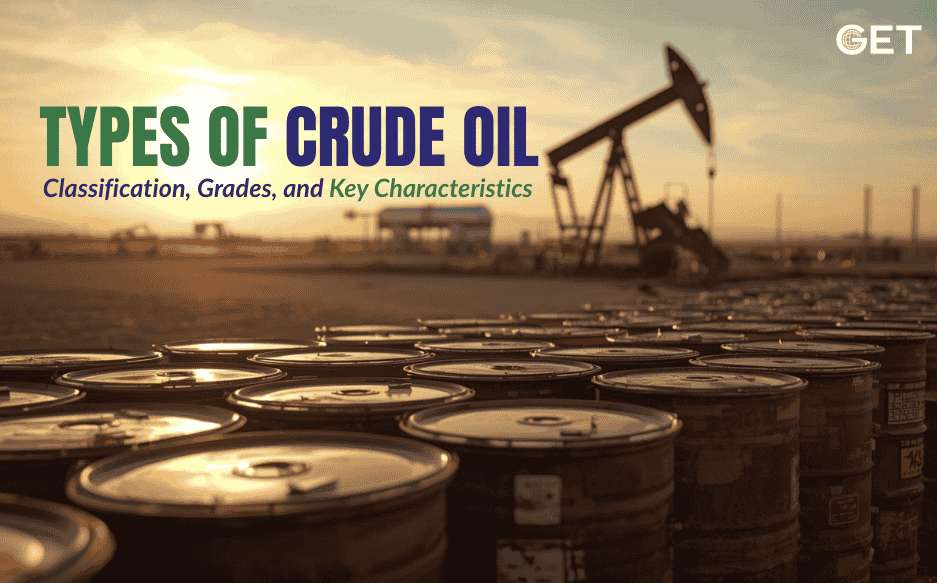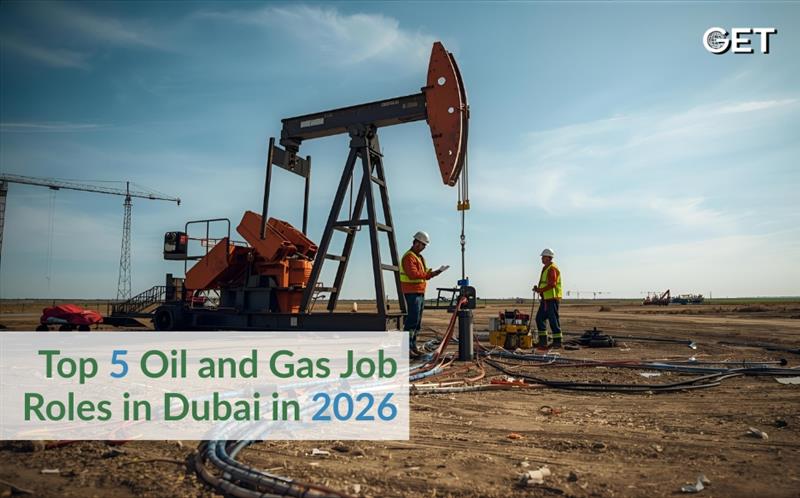
If you have ever walked through a refinery or sat with a trading team on a busy day, you know one thing quickly. Crude oil is not the same everywhere. Two barrels might look identical, but once they start moving through a unit, their personalities show up. One flows like warm tea. Another moves like syrup. And each one affects cost, output, and how smoothly a refinery runs.
People working in the upstream oil and gas segment see these differences even more clearly. At GET Global Group, we often meet teams who assume crude is a single category. Once they understand the real differences, their planning becomes sharper. So here is a simple, real-world way to look at the types of crude oil.
In the oil and gas industry, these classifications guide most purchasing and processing decisions. Before looking at specific types, it helps to know how people in the industry describe crude. There are three basic things everyone checks first.
• How heavy or light the oil feels
• How much sulfur it carries
• And where the oil actually comes from
These three things alone tell you a surprising amount about cost, behavior, and even future maintenance.
The API gravity is simply the information about how the oil will act in case you want to move it. Consider the contrast between pouring water and pouring honey. And that is the difference of light and heavy crude.
Light crude is the one most people like working with. It flows easily and turns into petrol, aviation fuel, diesel, and other high-value products with less effort. WTI and Brent are the classic examples. If you hold a sample of light crude, it genuinely moves like a thin liquid.
Medium crude is the middle child. It does not glide as smoothly as light crude, but most refineries can work with it without stress. A lot of Asian refineries are set up with medium grades in mind because they strike a good balance between price and output.
Heavy crude takes patience. It is thick, dark, and sometimes needs heating just to move through pipes. Canadian WCS and Venezuela’s Merey fall here. Heavy crude can still be profitable, but only if a refinery has the equipment for deep conversion.
Once the density is known, the next question is always about sulfur. Anyone who has handled crude knows sulfur quietly increases effort, corrosion, and cost.
Sweet crude has very little sulfur. It behaves nicely and produces cleaner fuels without too much treatment. Many refiners prefer it because it keeps operations predictable.
Sour crude carries more sulfur, so it needs additional processing. It is not “worse,” just more demanding. But here is the thing. Sour crude is often cheaper, and many refineries in the US and Middle East are built to handle it without trouble.
Crude is deeply shaped by the rock it sits in. Anyone familiar with upstream oil and gas operations knows how even small geological shifts can change the way a crude behaves. That is why the crude from Texas does not behave like crude from the North Sea or the Arabian Gulf.
Even if two crude grades look similar in charts, they can behave differently once inside a heat exchanger. Refiners always glance at a few extra properties before committing.
Read Also- Top 5 High Demand Oil and Gas Jobs in the UAE Driving the Future of Energy
The energy landscape is shifting fast. Clean fuel rules have tightened. Supply routes have changed. And refineries are upgrading unit by unit. In this context, settling on the wrong crude is just like settling on the wrong battery to use on your gadget. All is still functioning, but not how it ought to be.
McKinsey observes that multi-grade refineries are more likely to perform well throughout the next decade, just because the quality of crude and the demand profile is no longer stable.
Choosing crude is not just a technical choice anymore. It shapes:
• Fuel yields
• Maintenance schedules
• How often units need downtime
• Transport costs
• Compliance with emission rules
A crude slate that fits your refinery design can improve margins quietly but steadily. The wrong one will drain time, money, and team energy.
At GET Global Group, we help clients make sense of these differences so they choose crude grades that actually support their goals instead of complicating them.
Crude oil is not one thing. It is a family of materials with their own quirks. Some are smooth and easy. Some demand effort and skill. When you realise such disparities, you cease to think and see crude as a commodity but rather as an option.
GET Global Group can help you with sound advice that is based on practical experience.

By Get global | November 17, 2025
Anyone who has worked in the UAE energy sector will tell you the same thing. The industry here keeps moving. Every year brings new drilling activity, stronger digital adoption, and a clearer shift toward cleaner and more efficient operations. Because of this, companies are looking for a different mix of […]

By Get global | November 13, 2025
The upstream oil and gas business often conjures images of vast platforms, roaring drills, and crews battling the elements. What is less obvious to the outsider is how deeply technology has become woven into that fabric — not just innovations stuck onto rigs, but full-scale transformations that are reshaping how […]

By Get global | November 5, 2025
Life on an oil rig is unlike any conventional 9-to-5 job. The constant hum of machinery, high-pressure operations, and exposure to extreme weather conditions define the dynamic environment of upstream oil and gas. Among the many roles on a rig, the drilling engineer stands out as a key figure responsible […]

By Get global | October 30, 2025

By Get global | October 27, 2025